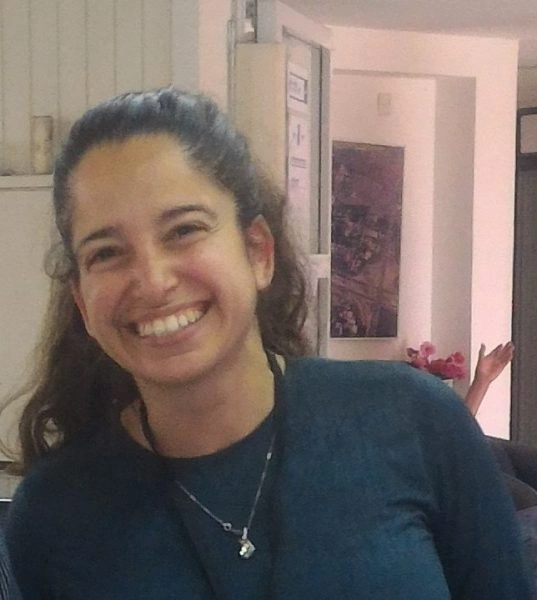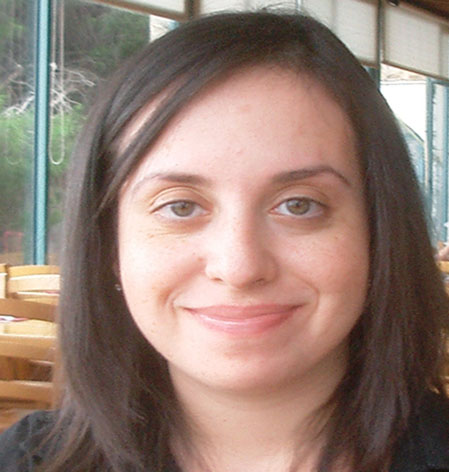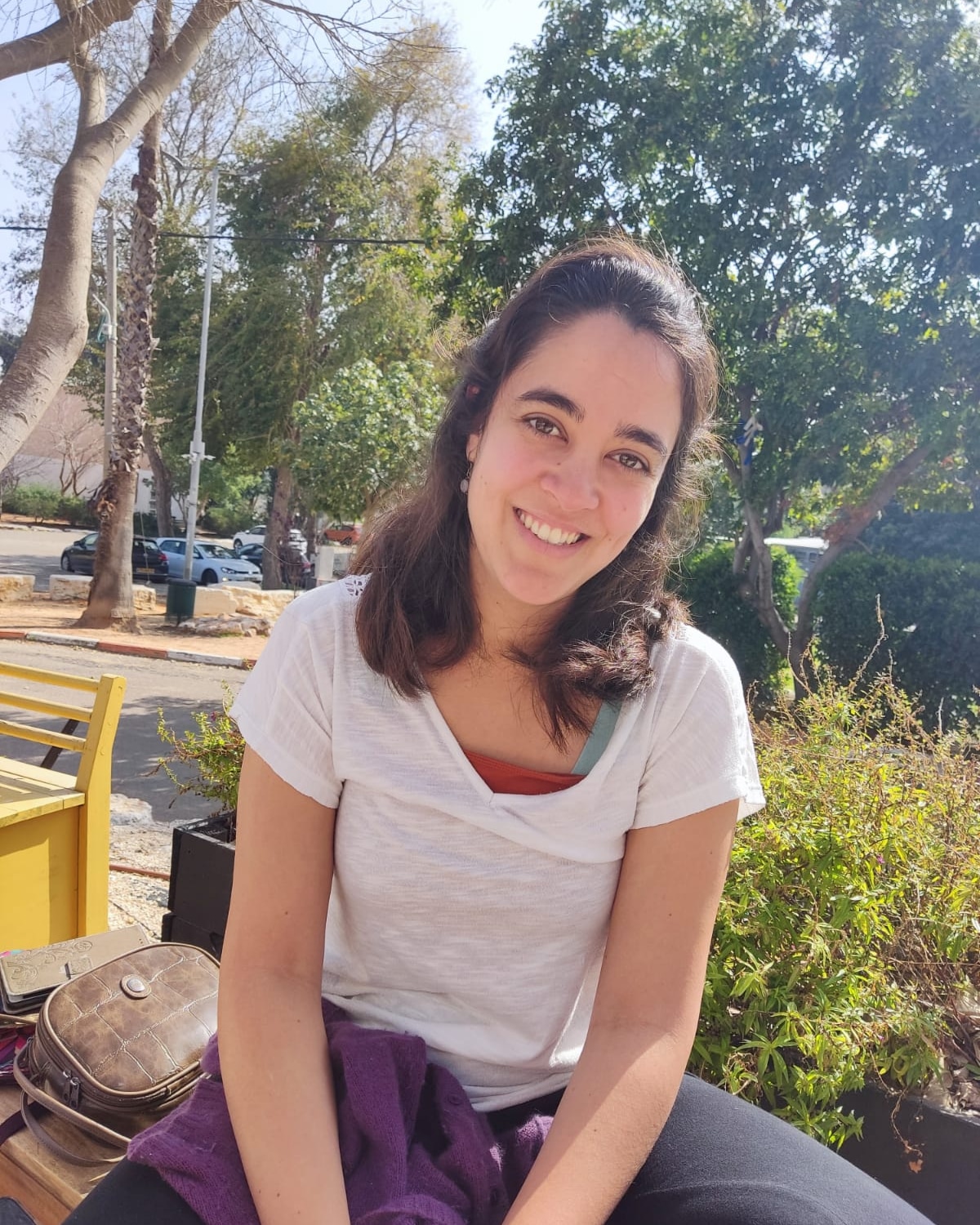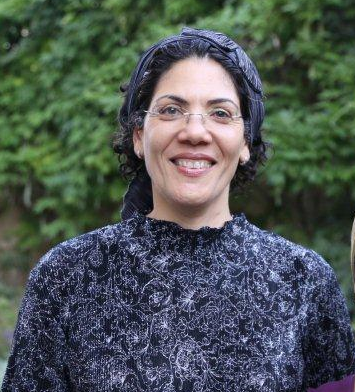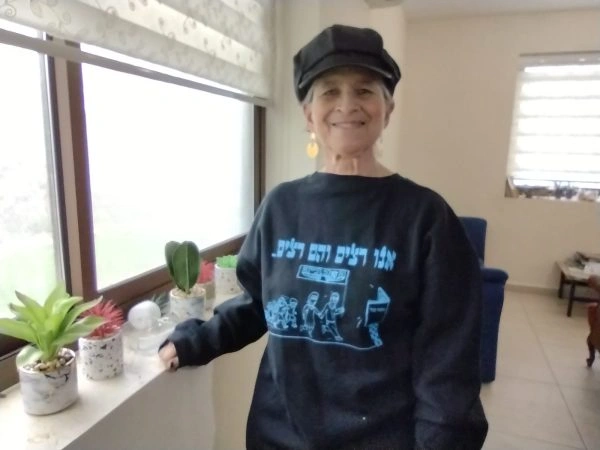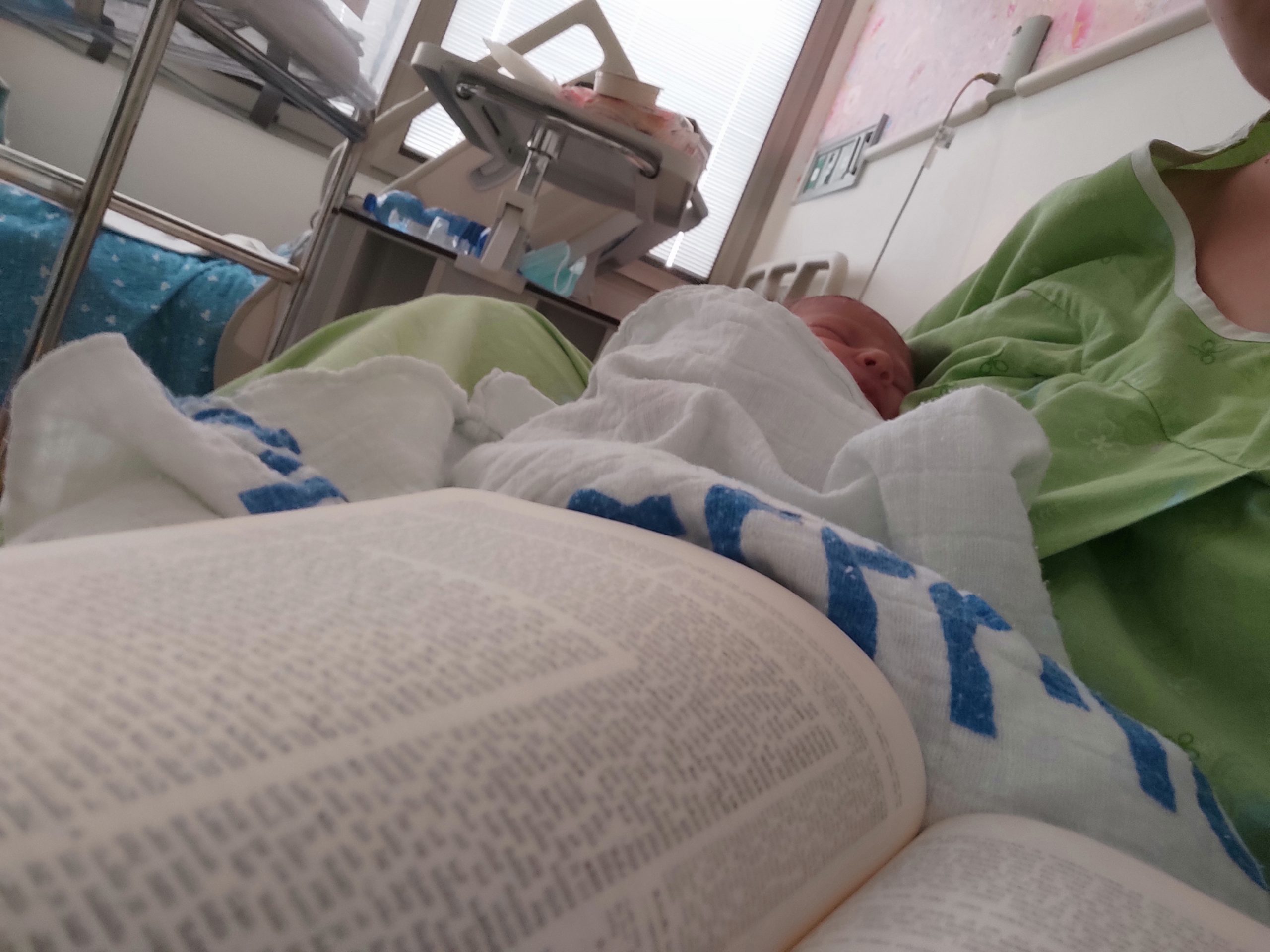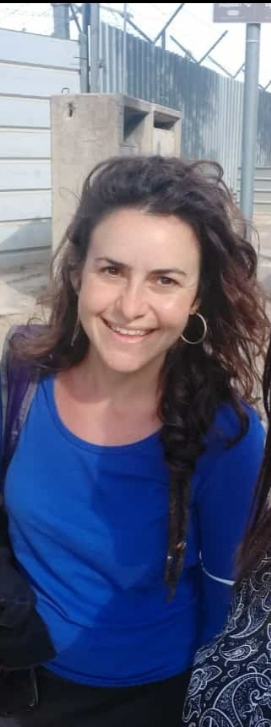הגמרא מעלה מספר שאלות (ארבע, כולל זו שבסוף העמוד הקודם) על עמדתו של הרב ינאי על פי השלון השני, כי גם על פי רבי יהודה הגרלת הגרלות מעכבת. בסופו של דבר הם מביאים הוכחה מברייתא כי עמדתו זו של הרב ינאי נכונה.
רוצה להקדיש לימוד?
חדשה בלימוד הגמרא?
זה הדף הראשון שלך? איזו התרגשות עצומה! יש לנו בדיוק את התכנים והכלים שיעזרו לך לעשות את הצעדים הראשונים ללמידה בקצב וברמה שלך, כך תוכלי להרגיש בנוח גם בתוך הסוגיות המורכבות ומאתגרות.
פסיפס הלומדות שלנו
גלי את קהילת הלומדות שלנו, מגוון נשים, רקעים וסיפורים. כולן חלק מתנועה ומסע מרגש ועוצמתי.
יומא מ
אֶלָּא לְהָךְ לִישָּׁנָא דְּאָמְרַתְּ פְּלִיגִי, בִּשְׁלָמָא לְמַאן דְּאָמַר לָא מְעַכְּבָא, הָא מַנִּי — רַבִּי יְהוּדָה הִיא,
But according to that second version of the dispute, in which you said that Rabbi Yannai and Rabbi Yoḥanan disagree whether the drawing of the lots is indispensable according to Rabbi Yehuda, but according to Rabbi Neḥemya it certainly is indispensable, then granted, according to the one, i.e., Rabbi Yoḥanan, who said that the drawing of the lots is not indispensable, in accordance with whose opinion is this baraita taught? It is in accordance with the opinion of Rabbi Yehuda.
אֶלָּא לְמַאן דְּאָמַר מְעַכְּבָא, הָא מַנִּי? תְּנִי: מִצְוָה לְהַנִּיחַ.
However, according to the one, i.e., Rabbi Yannai, who said that both according to Rabbi Yehuda and Rabbi Neḥemya the drawing of the lots is indispensable, then in accordance with whose opinion could this baraita be taught? It would appear that, according to Rabbi Yannai, the baraita does not reflect anyone’s opinion. Perforce, the baraita cannot be referring to drawing the lots, and one must emend and teach the baraita as saying that it is a mitzva to place the lots on the goats.
תָּא שְׁמַע: מִצְוָה לְהַגְרִיל וּלְהִתְוַדּוֹת. לֹא הִגְרִיל וְלֹא הִתְוַדָּה — כָּשֵׁר. וְכִי תֵּימָא הָכִי נָמֵי לְהַנִּיחַ, אֵימָא סֵיפָא, רַבִּי שִׁמְעוֹן אוֹמֵר: לֹא הִגְרִיל — כָּשֵׁר, לֹא הִתְוַדָּה — פָּסוּל.
Come and hear another challenge to Rabbi Yannai’s opinion, as presented in the second version of the dispute, which maintains that both Rabbi Yehuda and Rabbi Neḥemya hold that drawing of the lots is indispensable. A baraita teaches: It is a mitzva for the High Priest to draw the lots and to confess upon the goat to be sent to Azazel. If he did not draw the lots or did not confess, the service is still valid. This baraita also appears to say that the drawing of the lots is not indispensable, in contradiction to Rabbi Yannai’s opinion. And if you say: So too, the baraita should be emended to say it is a mitzva to place the lots on the goats, this is problematic. How will you then say, i.e., explain, the latter clause of that baraita, which teaches: Rabbi Shimon says: If he does not draw the lots, it is valid. If he does not confess, it is invalid?
מַאי ״לֹא הִגְרִיל״? אִילֵּימָא לֹא הִנִּיחַ, מִכְּלָל דְּרַבִּי שִׁמְעוֹן סָבַר הַגְרָלָה מְעַכְּבָא, וְהָתַנְיָא: מֵת אֶחָד מֵהֶן, מֵבִיא חֲבֵירוֹ שֶׁלֹּא בַּהַגְרָלָה, דִּבְרֵי רַבִּי שִׁמְעוֹן.
The Gemara clarifies the challenge from the latter clause: In this baraita, what is the meaning of: He did not draw the lots? If we say it means he did not place the lots on the goats, then by inference Rabbi Shimon holds that while the placing is not indispensable, the drawing of the lots is indispensable. But this is incorrect, since wasn’t it taught in a baraita: If, following the designation of the goats, one of them died, a new goat is brought to be the counterpart of the surviving goat and is designated without drawing lots; this is the statement of Rabbi Shimon. It would therefore appear that the baraita should not be understood as referring to the mitzva to place the lots, but as referring to the drawing of the lots themselves. Therefore, the challenge to Rabbi Yannai’s opinion remains.
רַבִּי שִׁמְעוֹן לָא יָדַע מַאי קָאָמְרִי רַבָּנַן, וְהָכִי קָאָמַר לְהוּ: אִי הַגְרָלָה — הַגְרָלָה מַמָּשׁ קָא אָמְרִיתוּ, פְּלִיגְנָא עֲלַיְיכוּ בַּחֲדָא. אִי הַגְרָלָה דְּקָאָמְרִיתוּ הַיְינוּ הַנָּחָה — פְּלִיגְנָא עֲלַיְיכוּ בְּתַרְתֵּי.
The Gemara responds: Rabbi Yannai’s opinion can still be defended by claiming that Rabbi Shimon did not know precisely what the Sages were saying, i.e., whether they were referring to the drawing or the placing of the lots. Therefore, in his response to them, this is what he is saying: If when you say: Drawing of the lots, you are saying that the actual drawing of the lots is not indispensable, as I also hold, then I disagree with you only with regard to one halakha, namely with regard to the indispensability of the confession. But if, when you say: Drawing of the lots, you are saying only that the placing of the lots is not indispensable, but you assume that the drawing of the lots is indispensable, then I disagree with you with regard to two halakhot, i.e., with regard to the indispensability of both the drawing of the lots and of the confession.
תָּא שְׁמַע: פַּר מְעַכֵּב אֶת הַשָּׂעִיר,
Come and hear another challenge to Rabbi Yannai’s opinion that all agree that the drawing of the lots is indispensable, from a baraita: Various services are performed with the bull and the goat and their blood. These services must be performed in a specific sequence, often alternating between the bull and the goat. If one service is neglected and a later service is advanced to be before it, the halakha is as follows: Failure to perform a service of the bull that was to precede a service of the goat disqualifies the service of the goat, if it was performed without that service of the bull preceding it.
וְשָׂעִיר אֵין מְעַכֵּב אֶת הַפָּר בְּמַתָּנוֹת שֶׁבִּפְנִים.
However, failure to perform a service of the goat that was to precede a service of the bull does not disqualify the service of the bull; rather, it is valid after the fact. This last rule applies to the applications of blood performed inside the Holy of Holies.
בִּשְׁלָמָא פַּר מְעַכֵּב אֶת הַשָּׂעִיר: דְּאִי אַקְדְּמֵיהּ לְשָׂעִיר מִקַּמֵּי פַּר — לָא עֲבַד וְלֹא כְּלוּם. אֶלָּא שָׂעִיר אֵין מְעַכֵּב אֶת הַפָּר — מַאי נִיהוּ?
The Gemara explains the challenge from the baraita: Granted, failure to perform the service of the bull disqualifies the service of the goat that is advanced ahead of it. This can be understood to mean that if he advanced the service of the goat ahead of the service of the bull, it is considered as though he has not performed anything at all. Once the service of the bull has been performed, the service of the goat must be repeated. However, the rule in the baraita that failure to perform a service of the goat does not disqualify the service of the bull that was advanced ahead of it. To what case is it referring?
אִילֵּימָא דְּאִי אַקְדֵּים מַתָּנוֹת דְּפַר בַּהֵיכָל מִקַּמֵּי מַתָּנוֹת דְּשָׂעִיר בִּפְנִים — ״חוּקָּה״ כְּתִיב בְּהוּ.
If we say that that the baraita means that if one advanced the applications of the blood of the bull in the Sanctuary made toward the curtain ahead of the applications of the blood of the goat inside the Holy of Holies, then the baraita should not rule that it is valid. The term “statute” (Leviticus 16:29) is written concerning the applications of the blood of the goat inside the Holy of Holies, which implies that their performance is indispensable to any subsequent services.
אֶלָּא לָאו, דְּאַקְדֵּים מַתָּנוֹת דְּפַר בִּפְנִים מִקַּמֵּי הַגְרָלָה. וּמִדְּסִדְרָא לָא מְעַכְּבָא — (עִיקְרָא) הַגְרָלָה נָמֵי לָא מְעַכְּבָא!
Rather, is it not that the baraita must be referring to a case in which one advanced the applications of the blood of the bull inside the Holy of Holies ahead of the drawing of the lots? If so, from the fact that the sequencing of drawing the lots is not indispensable, one may infer that the drawing of the lots itself is also not indispensable. This would then refute Rabbi Yannai’s opinion.
לָא, דְּאַקְדֵּים מַתָּנוֹת דְּפַר בְּמִזְבֵּחַ מִקַּמֵּי מַתָּנוֹת דְּשָׂעִיר בַּהֵיכָל, וְרַבִּי יְהוּדָה הִיא, דְּאָמַר: דְּבָרִים הַנַּעֲשִׂין בְּבִגְדֵי לָבָן בַּחוּץ — לָא מְעַכְּבִי.
The Gemara questions whether this is the only possible interpretation of the baraita: No, the baraita could be referring to a case in which one advanced the applications of the blood of the bull upon the altar ahead of the applications of the blood of the goat in the Sanctuary made toward the curtain. And as such, ruling in the baraita that this is valid after the fact is in accordance with the opinion of Rabbi Yehuda, who said: Matters that are performed in the white garments outside of the Holy of Holies are not indispensable. Therefore, the applications of the bull’s blood upon the altar cannot disqualify a different service.
וְהָא בְּמַתָּנוֹת שֶׁבִּפְנִים קָתָנֵי!
The Gemara rejects this as a possible interpretation of the baraita: But didn’t the conclusion of the baraita teach that the rule applies to the applications of blood performed inside the Holy of Holies? If so, the baraita cannot be referring to application of blood made upon the altar.
אֶלָּא: הָא מַנִּי — רַבִּי שִׁמְעוֹן הִיא, דְּאָמַר: הַגְרָלָה לָא מְעַכְּבָא.
Rather, the baraita must understood in the way suggested by the Gemara previously, which implies that the drawing of the lots is not indispensable. However, this is not necessarily a refutation of the opinion of Rabbi Yannai. One could say: In accordance with whose opinion is this baraita? It is in accordance with the opinion of Rabbi Shimon, who said: The drawing of the lots is not indispensable. Rabbi Yannai claimed only that Rabbi Yehuda and Rabbi Neḥemya agreed that it is indispensable.
וְאִיבָּעֵית אֵימָא: לְעוֹלָם רַבִּי יְהוּדָה הִיא, וּנְהִי דִּכְסִדְרָא לָא מְעַכְּבָא — הַגְרָלָה מִיהָא מְעַכְּבָא.
And if you wish, say: Actually, the baraita is in accordance with the opinion of Rabbi Yehuda. Nevertheless, Rabbi Yannai’s opinion may still be defended: Granted, the baraita teaches that the sequencing of the drawing of the lots is not indispensable; however it may still be true that the drawing itself is nevertheless indispensable. This contradicts what was suggested previously, that one may infer from the indispensability of the sequencing to the indispensability of the drawing itself.
וְאָזְדוּ לְטַעְמַיְיהוּ, דְּתַנְיָא:
And Rabbi Yehuda and Rabbi Shimon follow their lines of reasoning, as it was taught in a baraita:
״יׇעֳמַד חַי לִפְנֵי ה׳ לְכַפֵּר עָלָיו״, עַד מָתַי יִהְיֶה זָקוּק לַעֲמוֹד חַי? עַד שְׁעַת מַתַּן דָּמוֹ שֶׁל חֲבֵירוֹ — דִּבְרֵי רַבִּי יְהוּדָה. רַבִּי שִׁמְעוֹן אוֹמֵר: עַד שְׁעַת וִידּוּי דְּבָרִים.
The verse states: “But the goat on which the lot came up for Azazel shall be stood alive before the Lord, to make atonement over him, to send him away for Azazel into the wilderness” (Leviticus 16:10). The verse indicates that the goat must remain alive until a certain time. Were it to die beforehand, it would have to be replaced. Until when is the goat for Azazel required to stand alive? Until the time of the application of the blood of its counterpart, i.e., the goat for God; this is the statement of Rabbi Yehuda. Rabbi Shimon says: It must remain alive until the time of the verbal confession over it.
בְּמַאי קָא מִיפַּלְגִי? כִּדְתַנְיָא: ״לְכַפֵּר״ — בְּכַפָּרַת דָּמִים הַכָּתוּב מְדַבֵּר, וְכֵן הוּא אוֹמֵר: ״וְכִלָּה מִכַּפֵּר אֶת הַקֹּדֶשׁ״. מָה לְהַלָּן — בְּכַפָּרַת דָּמִים, אַף כָּאן — בְּכַפָּרַת דָּמִים, דִּבְרֵי רַבִּי יְהוּדָה.
With regard to what do they disagree? As it was taught in a baraita: The verse states that the goat should remain alive “to make atonement” (Leviticus 16:10). This indicates that it must remain alive until it effects atonement. Rabbi Yehuda and Rabbi Shimon dispute which atonement the verse is referring to. The verse speaks of atonement through the application of the blood of the sin-offering goat. And similarly it states: “When he has made an end of atoning for the Sanctuary, and the Tent of Meeting, and the altar, he shall present the live goat” (Leviticus 16:20). Just as there the reference is to atonement through blood, so too here the verse is referring to atonement through blood. This is the statement of Rabbi Yehuda.
רַבִּי שִׁמְעוֹן אוֹמֵר: ״לְכַפֵּר עָלָיו״, בְּכַפָּרַת דְּבָרִים הַכָּתוּב מְדַבֵּר.
Rabbi Shimon says: “To make atonement over it”; the verse speaks of atonement through speech, i.e., the verbal confession that is recited over it.
תָּא שְׁמַע, שָׁאֲלוּ תַּלְמִידָיו אֶת רַבִּי עֲקִיבָא: עָלָה בִּשְׂמֹאל, מַהוּ שֶׁיַּחֲזוֹר לְיָמִין? אָמַר לָהֶן: אַל תִּתְּנוּ מָקוֹם לַמִּינִין לִרְדּוֹת.
Come and hear a proof that the drawing of lots is not indispensable. A baraita teaches: Rabbi Akiva’s students asked him: If the lot for God was drawn by the High Priest’s left hand, what is the halakha with regard to whether he may transfer the lot to his right hand? He said to them: Do not give the heretics an opportunity to dominate. If it is allowed, they will adduce this as proof of their claim that the halakhot are not absolute, and the Sages have the power to change them as they see fit.
טַעְמָא דְּאַל תִּתְּנוּ מָקוֹם לַמִּינִין לִרְדּוֹת, הָא לָאו הָכִי מַהְדְּרִינַן לֵיהּ, וְהָא אָמְרַתְּ הַגְרָלָה מְעַכְּבָא, וְכֵיוָן דִּקְבַעְתֵּיהּ שְׂמֹאל הֵיכִי מַהְדְּרִינַן לֵיהּ?
The Gemara infers: The only reason Rabbi Akiva provided to disallow it was so as not to give heretics an opportunity to dominate, which implies that if not for this reason, it would be permitted to transfer the lot to the right hand. How could this be true? Didn’t you say that the drawing of the lots is indispensable? And, consequently, once the designation of the goat has been defined by the drawing of the left hand, how then could we transfer the lot to the right hand? Perforce, the designation is not created by the actual drawing, and as such it is not indispensable.
אָמַר רָבָא, הָכִי קָאָמְרִי: עָלָה הַגּוֹרָל בִּשְׂמֹאל, מַהוּ שֶׁיַּחֲזִירוּ לוֹ וְלִשְׂעִירוֹ לְיָמִין. אָמַר לָהֶם: אַל תִּתְּנוּ מָקוֹם לַמִּינִין לִרְדּוֹת.
The Gemara explains the baraita can be understood in a way in which it does not provide a proof: Rava said: This is what Rabbi Akiva’s students are saying: If the lot was drawn by his left hand, what is the halakha with regard to whether he may transfer it, the lot, and its associated goat to his right side. He said to them: Do not give the heretics an opportunity to dominate. Accordingly, there was never any suggestion of changing the designation of the goats. Therefore, no proof can be brought concerning the indispensability of the drawing of the lots.
תָּא שְׁמַע: אִילּוּ נֶאֱמַר: ״אֶת הַשָּׂעִיר אֲשֶׁר עָלָיו״, הָיִיתִי אוֹמֵר יַנִּיחֶנּוּ עָלָיו, — תַּלְמוּד לוֹמַר: ״עָלָה״, כֵּיוָן שֶׁעָלָה שׁוּב אֵינוֹ צָרִיךְ.
Come and hear a proof that the drawing of lots is indispensable. A baraita teaches (Sifra, Aharei Mot 2:4): If the verse had stated only: “The goat upon which the lot” (Leviticus 16:9), I would have said the intention is that he must physically place the lot upon it. Therefore, the verse also states: “On which it came up” (Leviticus 16:9), indicating that once the lot has come up from the receptacle, it is not necessary to do more, i.e., the lot does not have to be physically placed upon the goat.
לְמַאי? אִילֵימָא לְמִצְוָה, מִכְלָל דַּהֲנָחָה מִצְוָה נָמֵי לָא? אֶלָּא לָאו, לְעַכֵּב. וּשְׁמַע מִינַּהּ: הַגְרָלָה מְעַכְּבָא, הַנָּחָה — לָא מְעַכְּבָא!
The Gemara clarifies: To what does the baraita refer when it says it is not necessary to actually place the lot upon the goat? If we say it means that it is no longer necessary to do so even as a mitzva, then, by inference, one must conclude that the placement of the lot upon the goat is not even a mitzva. This is problematic. Since it is clearly part of the Yom Kippur service, it must at least be a mitzva. Rather, is it not that when the baraita teaches that the placing of the lot is not necessary, it means only that the placing of the lot is not indispensable? And conclude from it that the drawing of lots is indispensable, but the placement of the lot upon the goat is not indispensable.
אָמַר רָבָא, הָכִי קָאָמַר: אִילּוּ נֶאֱמַר ״אֲשֶׁר עָלָיו״, הָיִיתִי אוֹמֵר יַנִּיחֶנּוּ עָלָיו עַד שְׁעַת שְׁחִיטָה, תַּלְמוּד לוֹמַר: ״אֲשֶׁר עָלָה״, כֵּיוָן שֶׁעָלָה שׁוּב אֵינוֹ צָרִיךְ.
Rava rejects the proof: Rava said: This cannot serve as a proof, since this is what the baraita is saying: If the verse had stated only: “The goat upon which the lot,” I would have said that the intention is that he should physically place the lot upon the goat, and the lot should remain upon it until the time of its slaughter. Therefore, the verse also states: “On which it came up,” indicating that once the lot has come up from the receptacle and been placed upon the goat for even one moment, it is not necessary to do more, i.e., the lot does not have to remain on the goat anymore. Understood in this way, it cannot be determined from this baraita whether or not the placement is indispensable.
תָּא שְׁמַע: ״וְעָשָׂהוּ חַטָּאת״, הַגּוֹרָל עוֹשֵׂהוּ חַטָּאת, וְאֵין הַשֵּׁם עוֹשֵׂהוּ חַטָּאת.
Come and hear a proof that Rabbi Yehuda holds that the drawing of the lots is indispensable. A baraita in the Sifra teaches: The verse states: “Aaron shall bring forward the goat upon which the lot came up for the Lord, and he shall offer it for a sin-offering” (Leviticus 16:9). The verse indicates that the lottery makes it a sin-offering, but verbally designating the goat with the status of a sin-offering does not make it a sin-offering.
שֶׁיָּכוֹל, וַהֲלֹא דִּין הוּא: וּמָה בִּמְקוֹם שֶׁלֹּא קִידֵּשׁ הַגּוֹרָל — קִידֵּשׁ הַשֵּׁם, מְקוֹם שֶׁקִּידֵּשׁ הַגּוֹרָל, אֵינוֹ דִּין שֶׁיְּקַדֵּשׁ הַשֵּׁם?
The baraita continues: A verse is needed to teach this halakha, as I might have thought to come to the opposite conclusion. Is there not an a fortiori inference as follows: Just as in a case in which the use of a lottery does not consecrate the animals with a specific designation, e.g., a woman who has given birth and must bring two birds, one as a sin-offering and one as a burnt-offering, nevertheless a verbal designation of the animals with the required status does consecrate them, so too, in a case in which the use of a lottery does consecrate the animals, is it not logically right that verbally designating the animals with the required status should consecrate them?
תַּלְמוּד לוֹמַר: ״וְעָשָׂהוּ חַטָּאת״, הַגּוֹרָל עוֹשֶׂה חַטָּאת, וְאֵין הַשֵּׁם עוֹשֶׂה חַטָּאת.
In contradiction of this reasoning, the verse states, with regard to the goat: “He shall offer it for a sin-offering” to indicate that the lottery makes it a sin-offering; verbally designating the goat with the status of a sin-offering does not make it a sin-offering.




